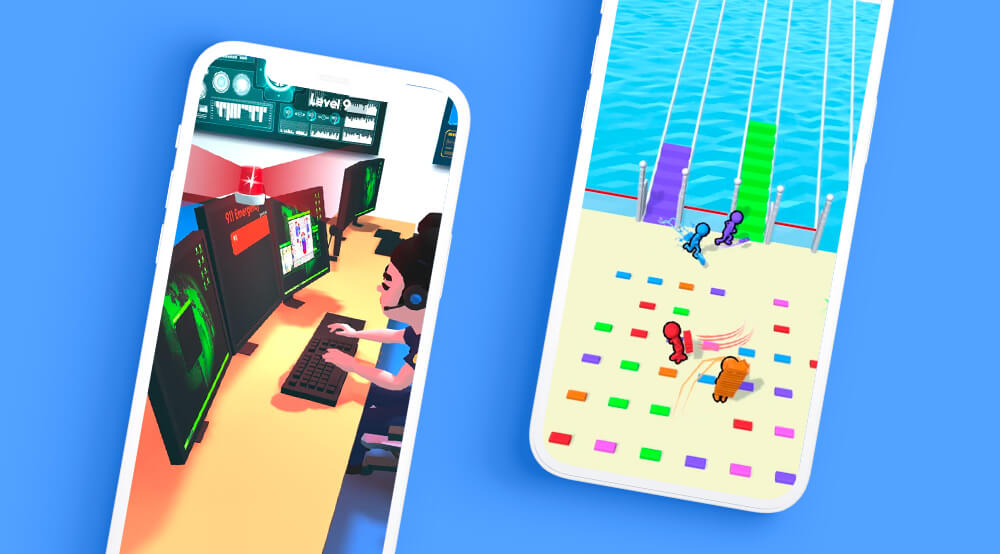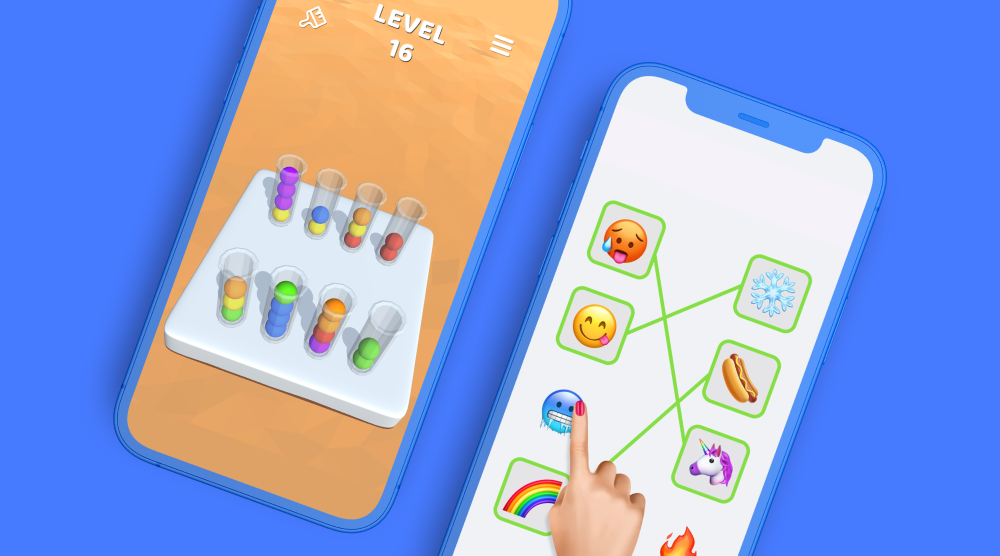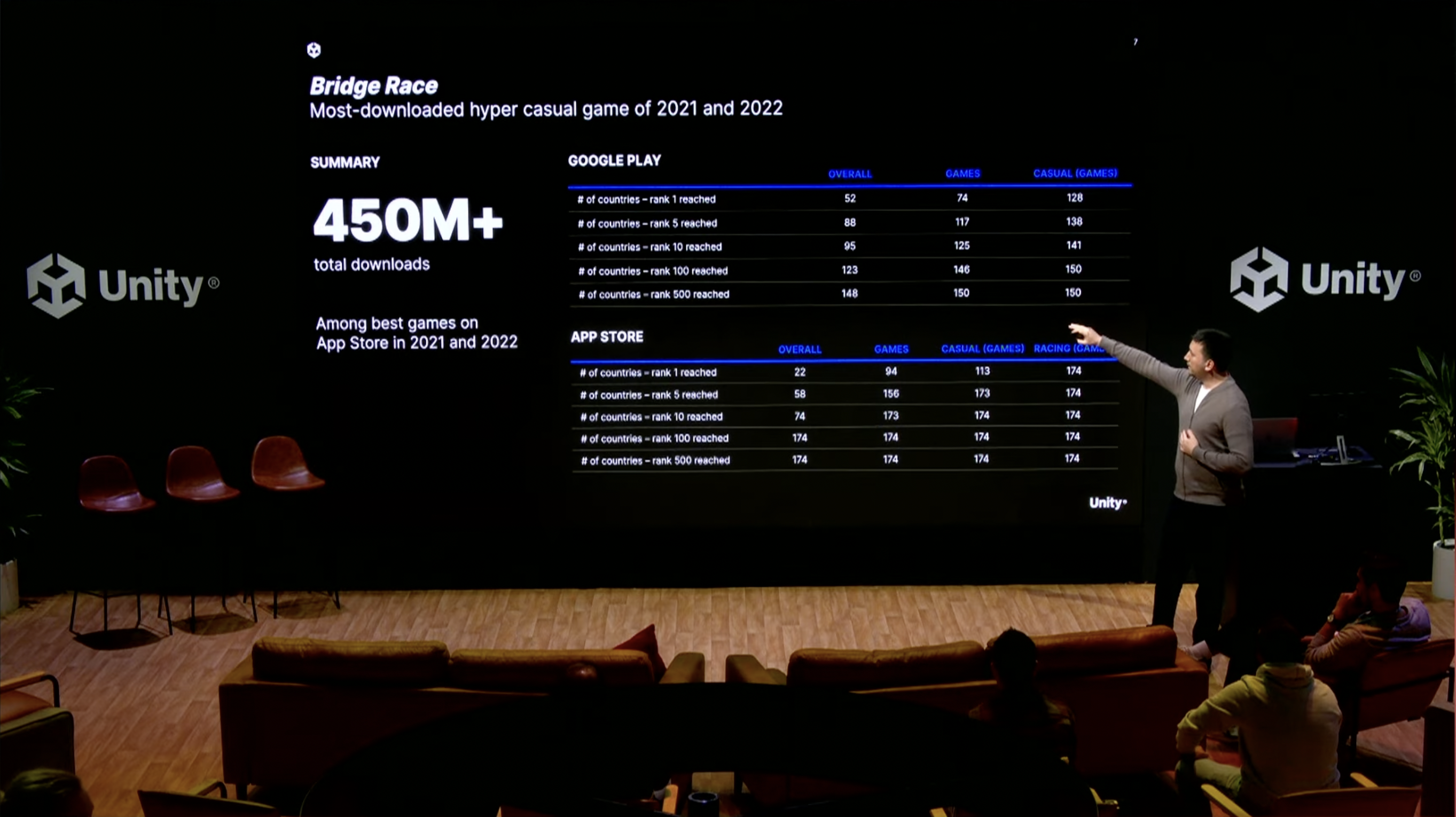Choosing the right mechanic for your hyper-casual game and executing it well is the key to creating an emotional response in players, which is accomplished by mastering the input (the action the player takes) and output (what happens in the game as a result of player action). As long as the mechanic feels rewarding, accessible, and snackable, players will keep coming back to your game.
In this article, Tomer Geller, Head of Game Design & Studio at Supersonic, and Shelley Aviner, Game Designer at Supersonic, share their insights on five trending hyper-casual mechanics scaling the charts. You can always try reinventing these existing mechanics (or others you’re seeing) and iterating on them to create something new that breaks free from what’s expected and makes your game more engaging for players.
1. Multiplier mechanic
Instead of collecting and growing one resource at a time, the multiplier mechanic enables players to grow their resources in groups. For example, players can pass through a gate in a runner game that multiplies their resources by 3x - as opposed to watching their resource count trickle up slowly with individual collection.
The multiplier is a more elegant and clean way to communicate progress than the original growth mechanic. In fact, according to App Annie, there were 2 multiplier games - Count Masters by Tap2Play and Arrow Fest by Rollic - in the top 5 in the past 30 days. In games with a classic growth mechanic, players see all of the objects and resources they need to collect. The multiplier mechanic, however, iterates on this so there’s just one object players need to acquire to achieve exponential growth and progress through the game. For example, a game with a traditional growth mechanic could show players 10 or 20 objects they need to pick up in a level. A game that uses the multiplier mechanic, however, could instead show players a gate that gives them +10 or +20 resources - this reduces the noise in the game and helps players feel more excited and rewarded, which can improve in-game KPIs like retention and playtime.
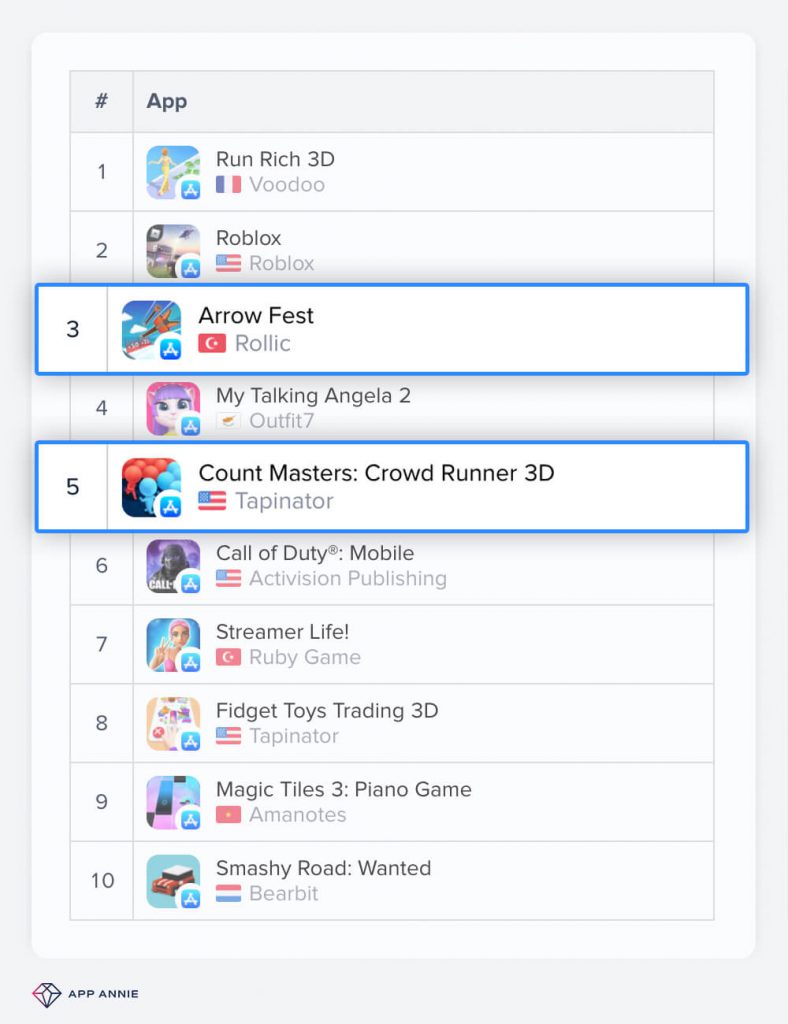
2. Stacking
An early form of the stacking mechanic already existed in mobile games, but it was later refined by video games like Fortnite, and this more dynamic version was then adapted for the hyper-casual industry.
Now, we’re seeing several stacking games in the top hyper-casual charts, like Bridge Race, which achieved over 100 million installs in 3 months and remains among the top 20. Garawell Games, the developer behind Bridge Race, worked with Supersonic to evolve the classic stacking mechanic into a more dynamic version, which introduced an additional output: players would stack tiles (the traditional output) to build bridges (the new output) and progress through the level. This feature added depth to the game and made it more exciting for players, yielding 750s of playtime and 45% D1 retention.
3. Decision-making
The decision-making mechanic is derived from real-world simulations and incorporates choices into story-based games. It’s become especially popular within the past year, which may be related to COVID-19 as more people were stuck inside and using their mobile devices to re-enact reality. The choose-your-own-adventure style of the mechanic gives power to the player and appeals to those who are story-driven.
911 Emergency Dispatcher is one example of a decision-making game that achieved incredible success this year, reaching #1 across all categories on both iOS, even surpassing TikTok for the top spot. In the game, there’s a logical element that presents players with a right or wrong choice, like deciding which emergency service to request based on the call they receive through dispatch. Combining narrative-based gameplay with a challenging aspect makes the game feel more dynamic - striking this balance helped 911 achieve 1000s playtime and maintain a spot in the top 10 games on iOS for over a month.
4. Transformation runners
In many transformation runners, there’s a qualitative resource - usually related to fictional or conceptual aspects like social or financial status - players try to collect and a resource they should avoid. As players accumulate social or financial resources and progress through the level, they’re able to transform their characters.
In older iterations of games with this mechanic, there were buttons on the screen that players could tap to switch the character state. For example, there could be three types of hats pictured as icons at the bottom of the screen that players could switch between to either make their character fly, swim, or walk on land. Now, transformation runners don’t include tapping between options - players interact with in-game pick ups that trigger character progression.
Looking at the past 30 days in the overall game charts, the transformation runner Run Rich 3D by Voodoo occupies the #1 spot. Games with this mechanic perform well on social networks, likely because of their real-life relatability - navigating social structures and striving for financial gain, for example, are situations familiar to most users. These games also have longer playtime, probably because users get to experience a transformation process that makes them feel rewarded throughout gameplay - not just when they finish a level, as is the case with traditional runners.
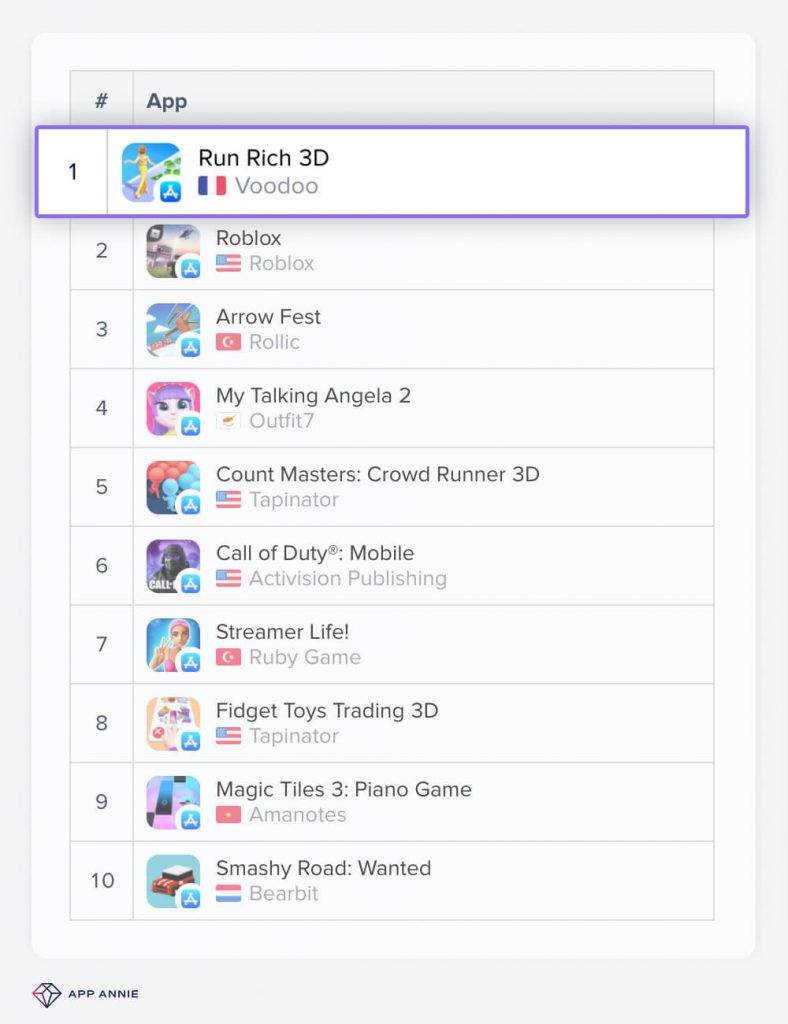
5. Trading simulation
We’re seeing a new mechanic on the rise in hyper-casual games: trading. The trend originated on social networks, like TikTok, and quickly made its way into the mobile gaming world. Developers have adapted the mechanic for a hyper-casual audience by simplifying the concept of negotiation while maintaining the appeal of simulating a real-life trading scenario. The mechanic also quickly gained traction because many of the game concepts were already familiar - like Fidget Toy trading - thanks to the widespread popularity of their videos on social media.
In fact, Fidget Toys Trading 3D by Tapinator and Fidget Trading 3D: Fidget Toys by Maglab - both of which use the trading mechanic - are among the top 15 games from the past 30 days, and we’re watching as other titles are released and scale. The trading mechanic is usually used in turn-based, PvP (player vs. player) games - taking turns is unusual for hyper-casual games, where user action often takes place at the same time as other players. Introducing this mechanic into hyper-casual games is a new way to engage and excite users, which can boost in-game metrics like retention. Showing off the trading mechanic effectively in creatives, too, can help your game stand out from the crowd and lower CPIs.
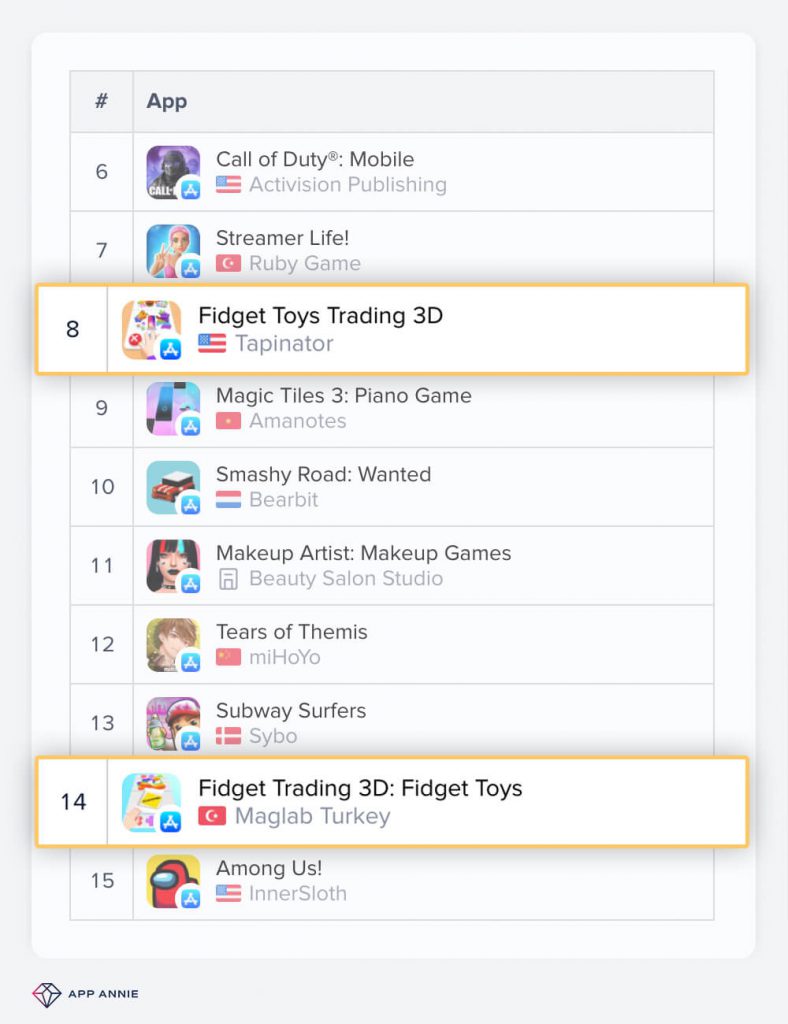
What mechanic is trending next?
Hyper-casual rankings shift quickly, and the next trending mechanic could appear in the top charts any day. Keep checking what’s trending so you can adapt your game or come up with a new concept that engages more users, drives scale, and reaches the top charts.
Think you know what the next big hyper-casual mechanic is? Let us know by leaving a comment on our LinkedIn.
Let's put these tips to good use
Publish your game with Supersonic
